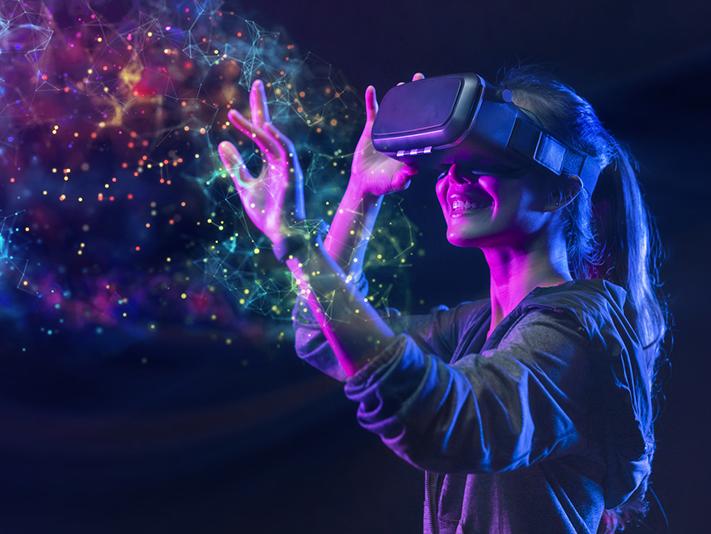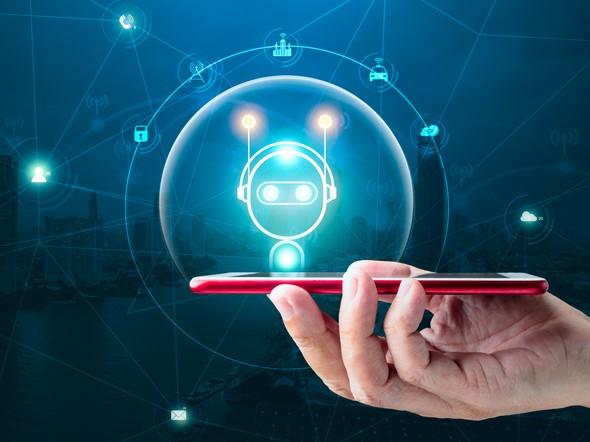
Three ways AI and immersive technology will revolutionise personalised learning

Personalised learning is the future of higher education. To get there, we must integrate emerging technologies such as artificial intelligence (AI), augmented reality (AR) and virtual reality (VR) into our curricula and the student experience.
Imagine a virtual, customisable avatar that is available for students to study with and learn from at their own pace. This personal assistant, based on AI and deep learning, would adapt to each student’s preferences, personality and learning style, becoming more intelligent with each encounter. To interact with the virtual assistant, the student would need only an AR headset that would transport them into an immersive classroom.
This is what the future of learning might look like. AI in learning can be:
- lifelong: learns continuously from the environment, on its own and in real time
- remote: provides intelligent tutoring and support to students when and where they need it
- collaborative: facilitates interactive discussions among students, so they can work together more effectively
- personalised: analyses student learning patterns, preferences and strengths to tailor learning content and learning pace, improving engagement and comprehension
- adaptive: uses algorithms to evaluate a student’s abilities and identify gaps where they require more support
- narrative: engages students with compelling storytelling that enhances learning
- equitable: improves accessibility for all students and provides personalised learning that better supports diverse learning needs.
Here are three ways I see AI and immersive technologies revolutionising personalised learning:
1. Adapting education to each student’s learning pace
As an educator in a classroom, you can’t adapt to 20 students’ individual rates of comprehension simultaneously. If you accommodate a slow learner, you bore faster learners. If you go too fast, you lose the slow learner, and they disconnect. AI avatars could allow teachers to approximate one-to-one learning.
- Campus podcast: the future of XR and immersive learning
- Find out about AI’s potential to give every student a personal tutor 24/7
- Resources for using GenAI in teaching and research
By integrating AR into the curriculum, we could help students to become the creators of their own course and tailor the way they want to learn. Educators would train the avatars with the information they need to become virtual tutors. In the beginning, we might teach 10 avatars that are each dedicated to five students who can reserve time with them when they need assistance, similar to a teaching assistant. Students with similarities could be grouped together and paired with the same avatar. Over time, we can transition to more individualised learning in which each student is assigned their own avatar that adapts to their comprehension rate and learning style.
Each time a student interacts with an avatar, it adapts to the student’s learning pace and style. That’s the basis of adaptive robotics – learning from the data to continuously improve and respond to the ever-changing needs of the learner. The AI-enabled assistant may even perceive stress and mood to help improve the student’s mental well-being. Human-robot teaming in which the robot senses and adapts to the human’s well-being, for example, has been studied for many years.
In fall 2024, SMU Lyle School of Engineering will be piloting an AR experience for mechanical engineering courses to test this out. Students will use AR tools to take some of their courses so that we can explore the possibilities for improved personalisation.
2. Improving memorability with gamification and storytelling
Students are already using AI tools that can generate support such as quizzes, recaps and flash cards to improve their study. They ask chatbots questions related to the class lecture.
In the future, these tools will become more sophisticated, designed to incorporate storytelling to make learning more memorable and impactful. Among the types of AI learning, narrative AI is among the most effective methods because studies show the human brain is hardwired to process and retain stories more effectively than isolated data. By placing the student in an immersive environment and making them the main character of the narrative, you can tap into their motivations to compete, progress, discover and learn. Educational and narrative games will allow educators to deliver content that keeps students engaged.
3. Customising everything in the student’s learning environment
Everything in the student’s virtual environment – from the scenery to the appearance of the avatar teaching assistant – can be customised to the student’s preference. By using digital twin technology, students can even invite others into their virtual environment and exist in a common classroom so they’re not alone.
Learning resource formats can be tailored to individual style, personality and preference, ensuring students receive content how they prefer – whether it’s video, audio, books, articles or other formats. A developer can work with you to easily convert your content into different multimedia formats. The advantages of this point back to narrative AI and the importance of engagement for memorability, motivation and stimulation. Students will have the opportunity to participate in more immersive and interactive stories in whichever form is most engaging. Customisation and adaptability also create a more inclusive educational environment where every student feels as if their educational needs are met.
Ultimately, faculty buy-in for AI and immersive technology is necessary for these powerful tools to become effective for students. Leaders in higher education cannot implement these methods with a top-down approach. The faculty owns the curriculum and must have willingness to shift the culture towards adoption. We will continue to face challenges and questions related to AI and AR in education. But we can’t ignore that these technologies are on the brink of fundamentally reshaping how the future workforce will operate, and we need to be at the forefront of this transformation.
Nader Jalili is the Mary and Rich Templeton dean of Lyle School of Engineering at Southern Methodist University.
If you would like advice and insight from academics and university staff delivered direct to your inbox each week, sign up for the Campus newsletter.

